4-(Difluoromethoxy)nitrobenzene
- CAS NO.:1544-86-1
- Empirical Formula: C7H5F2NO3
- Molecular Weight: 189.12
- MDL number: MFCD00085009
- SAFETY DATA SHEET (SDS)
- Update Date: 2023-04-23 13:52:06
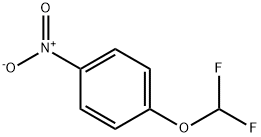
What is 4-(Difluoromethoxy)nitrobenzene?
Chemical properties
Pale Yellow Crystal.
The Uses of 4-(Difluoromethoxy)nitrobenzene
4-(Difluoromethoxy)nitrobenzene is an industrial chemical that can be used to make 4-fluoro-3-pyridinol (F3P), a compound that has potential as a new drug for the treatment of cancer. The synthesis of F3P begins with the reaction of 4-(difluoromethoxy)nitrobenzene and potassium hydroxide in methanol, which yields 4-fluoro-3-hydroxypyridine. This product is then reacted with ammonia gas and pyridine to yield F3P. The final step involves heating the product at high temperature with nitric acid, which yields nitrobenztriazole.
General Description
4-(Difluoromethoxy)nitrobenzene (1-(difluoromethoxy)-4-nitrobenzene) can be synthesized by reacting 4-nitrophenol with KOH, water and methanol.
Properties of 4-(Difluoromethoxy)nitrobenzene
| Melting point: | 37-40 °C (lit.) |
| Boiling point: | 108 °C |
| Density | 1.384±0.06 g/cm3(Predicted) |
| Flash point: | >230 °F |
| storage temp. | 2-8°C |
| form | powder to lump |
| color | Light yellow to Brown to Dark green |
| FreezingPoint | 31.0 to 34.0 ℃ |
| CAS DataBase Reference | 1544-86-1(CAS DataBase Reference) |
Safety information for 4-(Difluoromethoxy)nitrobenzene
| Signal word | Warning |
| Pictogram(s) |
 Exclamation Mark Irritant GHS07 |
| GHS Hazard Statements |
H302:Acute toxicity,oral H315:Skin corrosion/irritation H319:Serious eye damage/eye irritation H335:Specific target organ toxicity, single exposure;Respiratory tract irritation |
| Precautionary Statement Codes |
P261:Avoid breathing dust/fume/gas/mist/vapours/spray. P264:Wash hands thoroughly after handling. P264:Wash skin thouroughly after handling. P270:Do not eat, drink or smoke when using this product. P280:Wear protective gloves/protective clothing/eye protection/face protection. P304+P340:IF INHALED: Remove victim to fresh air and Keep at rest in a position comfortable for breathing. P305+P351+P338:IF IN EYES: Rinse cautiously with water for several minutes. Remove contact lenses, if present and easy to do. Continuerinsing. P405:Store locked up. P501:Dispose of contents/container to..… |
Computed Descriptors for 4-(Difluoromethoxy)nitrobenzene
New Products
4-Fluorophenylacetic acid 4-Methylphenylacetic acid N-Boc-D-alaninol N-BOC-D/L-ALANINOL Tert-butyl bis(2-chloroethyl)carbamate 3-Morpholino-1-(4-nitrophenyl)-5,6-dihydropyridin- 2(1H)-one Furan-2,5-Dicarboxylic Acid Tropic acid S-2-CHLORO PROPIONIC ACID ETHYL ISOCYANOACETATE 2-Bromo-1,3-Bis(Dimethylamino)Trimethinium Hexafluorophosphate (6-METHYL-[1,3]DITHIOLO[4,5-b]QUINOXALIN-2-ONE INDAZOLE-3-CARBOXYLIC ACID 4-IODO BENZOIC ACID (2-Hydroxyphenyl)acetonitrile 4-Bromopyrazole 5,6-Dimethoxyindanone 2-(Cyanocyclohexyl)acetic acid 4-methoxy-3,5-dinitropyridine 2-aminopropyl benzoate hydrochloride 1-(4-(aminomethyl)benzyl)urea hydrochloride diethyl 2-(2-((tertbutoxycarbonyl)amino) ethyl)malonate tert-butyl 4- (ureidomethyl)benzylcarbamate Ethyl-2-chloro((4-methoxyphenyl)hydrazono)acetateRelated products of tetrahydrofuran
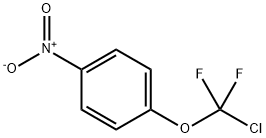


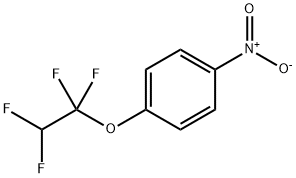
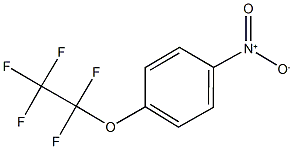

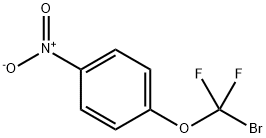

You may like
-
 4-(Difluoromethoxy)nitrobenzene CAS 1544-86-1View Details
4-(Difluoromethoxy)nitrobenzene CAS 1544-86-1View Details
1544-86-1 -
 1-DIFLUOROMETHOXY-4-NITRO-BENZENE CAS 1544-86-1View Details
1-DIFLUOROMETHOXY-4-NITRO-BENZENE CAS 1544-86-1View Details
1544-86-1 -
 1975-50-4 98%View Details
1975-50-4 98%View Details
1975-50-4 -
 2-HYDROXY BENZYL ALCOHOL 98%View Details
2-HYDROXY BENZYL ALCOHOL 98%View Details
90-01-7 -
 2-Chloro-1,3-Bis(Dimethylamino)Trimethinium Hexafluorophosphate 221615-75-4 98%View Details
2-Chloro-1,3-Bis(Dimethylamino)Trimethinium Hexafluorophosphate 221615-75-4 98%View Details
221615-75-4 -
 61397-56-6 CIS BROMO BENZOATE 98%View Details
61397-56-6 CIS BROMO BENZOATE 98%View Details
61397-56-6 -
 14714-50-2 (2-Hydroxyphenyl)acetonitrile 98+View Details
14714-50-2 (2-Hydroxyphenyl)acetonitrile 98+View Details
14714-50-2 -
 118753-70-1 98+View Details
118753-70-1 98+View Details
118753-70-1
Statement: All products displayed on this website are only used for non medical purposes such as industrial applications or scientific research, and cannot be used for clinical diagnosis or treatment of humans or animals. They are not medicinal or edible.